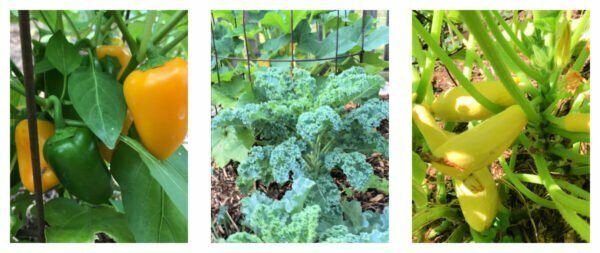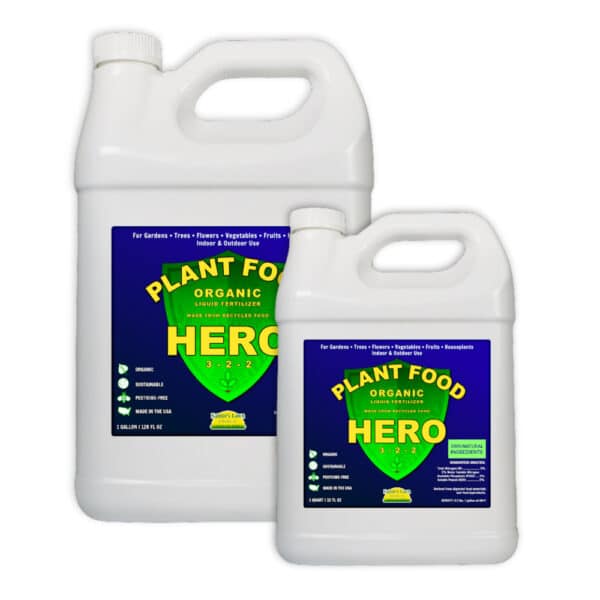How to Save a Drought-Stressed Garden
It’s been a hot and deceptively dry summer all over most of the country, so unless you’ve been keeping a close eye on your garden it might be struggling right about now. Drought can lead to compacted soil, stunted roots and plant growth, and most disappointing of all, a lackluster harvest.
Here are a few tips to revive your garden and salvage your harvest!
- Water DEEPLY. Make sure the root zone is good and moist. The fastest way to ruin flower or vegetable gardens is to let the soil dry out. Check the soil with a hand spade and you may be surprised at how dry it actually is. It’s even worse when there are tree or shrub roots reaching into your garden. Don’t depend on rain or frequent quick watering that barely gets into the soil surface. Watering deeply (1-2 hours) and less frequently is the way to go.
- In your garden, trim away any leaves or stems that are unsalvageable. Burnt-looking, withered, or diseased—trim it all away. This won’t harm the plants, but rather it frees up energy for the plants to devote to new growth, blossoms, and fruits.
- Apply a gentle, balanced fertilizer. Fertilizer can help get things growing better, but too much nitrogen when a plant is stressed can cause burning. A more gentle, balanced, organic fertilizer can be applied to the soil while you are watering your plants. When the plants are no longer drought-stressed, you can start foliar-feeding them to really enhance the number and quality of buds, flowers, and fruiting.
So what’s the best fertilizer when your garden is stressed and struggling?
INTRODUCING: Plant Food Hero! An Organic, Sustainably-Sourced, 3-2-2 Liquid Fertilizer for Flowers, Vegetables, Trees, Shrubs, & Houseplants
Plant Food Hero is not your typical fertilizer! This is a revolutionary, completely sustainable, organic fertilizer created by patented technology that harvests nutrients from food scraps.
Now you can feed your soil while preserving the planet!
As fish supplies are drastically decreased through over-fishing, traditional fish fertilizers are no longer seen as a sustainable organic fertilizer choice. Plant Food Hero provides a more sustainable and cost-effective way to grow food, gardens, landscapes, and more. This 3-2-2 plant food is a balanced, water soluble, liquid organic fertilizer that supports beneficial soil life and plant microbes, creating healthy soils and plants.
What Are Some Benefits of Using Plant Food Hero Organic Liquid Fertilizer?
- Contains essential nutrients that are instantly available to grow bigger, more beautiful plants, vegetables, and flowers
- Encourages strong, steady growth for grass, trees, shrubs, houseplants, flower gardens, vegetable gardens, and more
- Easy to apply liquid can be applied with any hose end sprayer, backpack sprayer, or tow-behind sprayer. You can also use it as a foliar feed!
- See your garden thrive with stronger roots and increased resistance to disease, fungus, weather stress, and insects
- Guaranteed not to burn plants or grass when used as directed
- Never worry about harsh chemicals or salts poisoning your soil or the environment with this non-toxic, organic fertilizer
How to Use Plant Food Hero to Salvage Your Flower, Perennial, or Vegetable Gardens From Heat and Drought-Stress
- At a mix-rate of 2 oz of Plant Food Hero per gallon of water, drench the soil around the plants using a watering can or adjustable hose end sprayer at medium-low water pressure. If the soil has not been fertilized well already you can use up to 4 oz per gallon for the initial treatment.
- Follow up with foliar feeding at a mix-rate of 2 oz Plant Food Hero per gallon of water (1 TBSP per quart) every 10-14 days. Mist leaves until the point of run-off, paying extra attention to the underside of the leaves.
- Sit back and relax as your garden produces more buds, blooms, and fruits than ever before!

How to Manage a Garden Impacted by Overwatering or Flooding
While most of the country has been experiencing drought conditions, perhaps you live in an area where the opposite is true. Whether your garden has become oversaturated by excess rain or unexpected flooding, it’s important not to water your garden until the first 3-4 inches of soil are dry. Many times, an overwatered garden can recover naturally by simply drying out (with the help of a few sunny days).
Can I Still Eat Veggies and Fruits After a Flood?
Unfortunately, many mature veggies and fruits cannot be salvaged after suffering from a flood situation. Most leafy vegetables and berries should be discarded because standing water causes an increase in bacteria that can’t be safely cleaned off of these crops. However, root, bulb, and tubers can rebound from flooding. You will need to clean and thoroughly cook these veggies before eating them to ensure any remaining bacteria is cooked away. Any produce with protective, hard outer shells (eggplants and melons) can be cleaned and cooked thoroughly.
The golden rule: When in doubt, throw it out.
When soils are submerged in water for too long the oxygen is pushed out of the soil, which leads to root rot and the death of beneficial soil microbes and plant life. The only way to rehabilitate soil that has lost its structure, aeration, and bio-matter due to flooding or water-logging is to break up the clay bonds and reintroduce air into the soil, in order to help roots to breathe and to regenerate the bio-matter that is capable of rebuilding soil structure.
The simplest way to do this is by applying a soil penetrant that can work into the clay, one that can also break some of the clay bonds and release oxygen throughout the root zone and below. Our product of choice is Aerify PLUS. It not only provides liquid aeration to damaged soil, but it also puts readily available organic matter (humic acid and kelp/seaweed) that acts as bio-stimulants to plants and soil microbes, while also providing food for beneficial soil restructuring microbes. If your garden has suffered from flooding or being water-logged, be sure to use Aerify PLUS today to get your soil back in shape!



